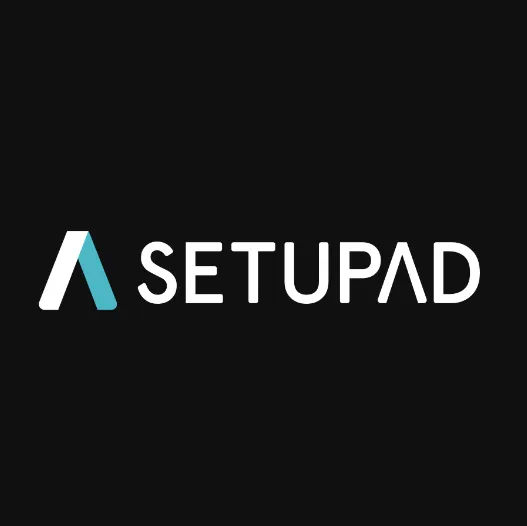Best AI Accessibility Enhancement Tools & Platforms
Accessibility has evolved from a compliance requirement into a core pillar of digital experience. Today, over 1.3 billion people globally live with some form of disability (WHO, 2023). Yet, less than 3% of websites fully comply with WCAG accessibility standards (WebAIM Million Report, 2023).
This is where AI-powered accessibility tools and platforms step in — transforming the way individuals interact with digital environments. From AI-driven screen readers and real-time captioning to adaptive learning interfaces, these tools are reshaping inclusivity across workplaces, education, and online platforms. With WCAG 2.1 AA-based remediation for ADA compliance and DOJ making it a necessity compliance, this space has emerged and leading digital organizations are working towards creating a truly inclusive space for all.
In this listing, we explore the best AI accessibility enhancement tools, their benefits, and how to make the right selections.

What Are AI Accessibility Enhancement Tools?
AI accessibility tools use artificial intelligence to remove barriers in digital interactions. They combine machine learning, natural language processing, and computer vision to make websites, apps, and platforms accessible for:
- Visually impaired users (screen readers, alt-text generators, OCR tools)
- Hearing impaired users (AI captioning, transcription, real-time translation)
- Cognitive accessibility needs (simplified text, adaptive layouts)
- Physical accessibility needs (voice navigation, gesture recognition)
These platforms go beyond compliance — they personalize experiences and make inclusion scalable. Usually these tools work with platforms like WordPress, Shopify, Wix, WooCommerce, WebFlow, SquareSpace, etc through integrations and have custom setup as well.
Key Statistics & Insights on Why AI Accessibility Matters Today
The digital frontier is spreading beyond an ecosystem to a lifestyle necessity. This makes it imperative to provide digital accessibility to everyone in ways that are extremely crucial.
- 1 in 6 people worldwide experience disability (WHO, 2023).
- 96.8% of websites fail to meet WCAG accessibility guidelines (WebAIM, 2023).
- Organizations with inclusive design practices see a 28% increase in customer satisfaction (Forrester Research).
- AI captioning accuracy has reached 95–98%, making it a reliable tool for live events and workplace communication.
- Companies investing in accessibility open access to an estimated $13 trillion global disability market.
Types of AI Accessibility Enhancement Tools
Before we deep dive on the list of platforms and tools that provide solutions for AI accessibility, we have to understand the different types of AI accessibility.
- AI for Visual Accessibility: Using AI for visual accessibility expands inclusion and independence for people with vision disabilities. Some of the techniques to achieve this includes-
-
- AI-powered Screen Readers (convert text and images into speech)
- Image Recognition & Auto Alt-Text Generators (describe images for the visually impaired)
- OCR (Optical Character Recognition) to digitize print into accessible formats
- AI for Hearing Accessibility: AI-driven technologies to bridge gaps in communication, sound recognition, and environmental awareness for people with hearing impairments.
-
- AI Captioning & Transcription Software
- Real-Time Translation Tools for global collaboration
- AI-Powered Video Caption Plugins for social media and learning platforms
- AI for Cognitive Accessibility: AI tools and systems help individuals with cognitive disabilities or neurodiverse conditions (such as ADHD, autism, dyslexia, traumatic brain injury, dementia, or learning difficulties) navigate, process, and engage with information and environments more effectively.
-
- Simplified Text & Summarization Tools (AI that rewrites content for easier understanding)
- Adaptive Learning Platforms (personalized content delivery)
- Voice & Conversational AI Assistants that reduce navigation complexity
- AI for Physical Accessibility: AI-driven technologies designed to assist people with mobility impairments, motor disabilities, or physical limitations in interacting with the world — whether that’s digital interfaces, physical environments, or everyday tasks.
-
- Voice Navigation & Command Recognition (Google Assistant, Siri, Alexa integrations)
- AI-Powered Gesture Recognition for touchless interactions
- Adaptive Keyboards & Predictive Text Input to support mobility challenges
Features to Look for in AI Accessibility Tools
When evaluating tools and platforms, there are few things that need to be focused on:
- Compliance: WCAG 2.1, ADA, Section 508 standards
- Automation: AI-driven suggestions and remediation
- Cross-Platform: Works across web, mobile, and enterprise apps
- Scalability: Supports large teams, content-heavy websites, and global users
- Personalization: Adaptive features tailored to individual needs
- Offers Integrations: Supports integrations with common CMS platforms

Benefits of Using AI Accessibility Platforms
AI accessibility tools and platforms push design toward smarter, human-centered innovation. It prepares businesses and institutions for the future of inclusive digital ecosystems and for builds brand loyalty for first movers. Here are some of the benefits of using AI accessibility platforms
- Inclusivity at Scale – Reach broader audiences with accessibility-first design
- Workplace Productivity – AI tools empower employees with adaptive workflows
- Business Growth – Unlocks access to the disability economy worth trillions
- Compliance & Risk Reduction – Reduces risk of lawsuits and accessibility penalties
- Innovation Catalyst – Many accessibility breakthroughs fuel mainstream innovation (for example, voice recognition started as an accessibility tool)
Conclusion: Building an Inclusive Digital World with AI
AI accessibility tools are not just about compliance — they are about empowering human potential. Whether it is a student accessing digital learning, an employee collaborating globally, or a customer interacting with a brand, accessibility is the key to universal participation in the digital economy.
Organizations that embrace AI accessibility platforms will not only stay ahead in compliance but also lead in inclusivity, innovation, and market growth. As digital frontiers become more integrated to the societal fabric, digital accessibility becomes a necessity across nations big and small.
Start exploring the best AI accessibility tools today and take the next step toward a truly inclusive digital ecosystem.
Our Editors’ Pick:
Browse these amazing publisher monetization tools handpicked by our team of editors





 (1).webp)


